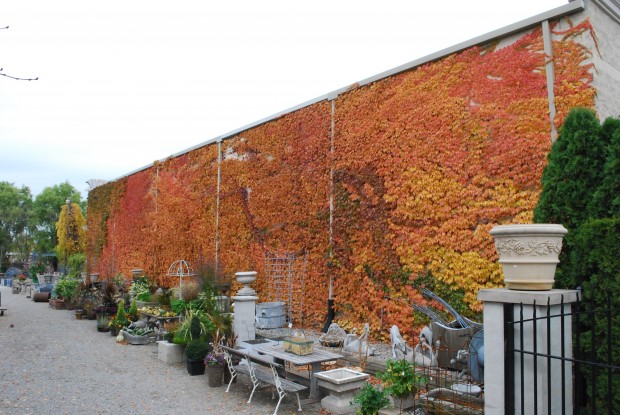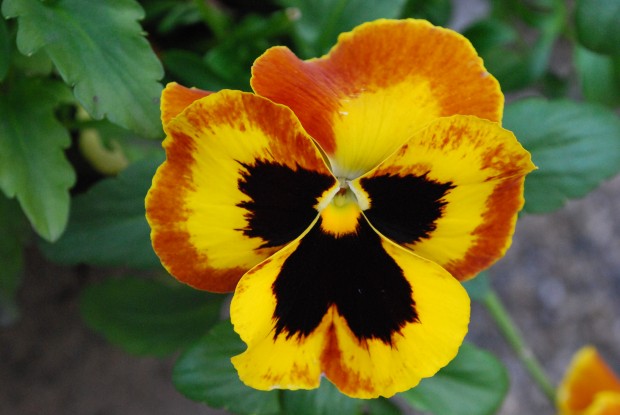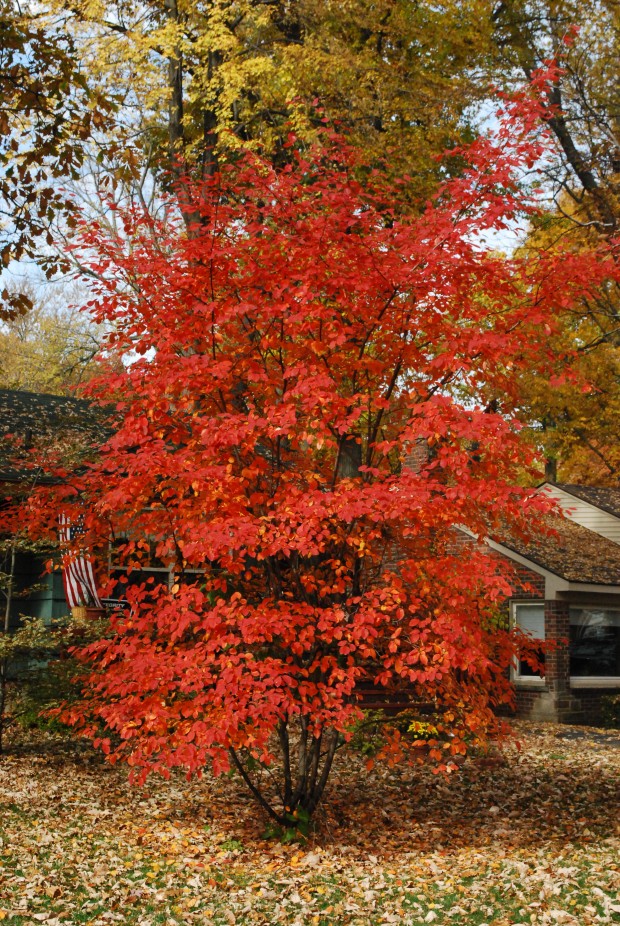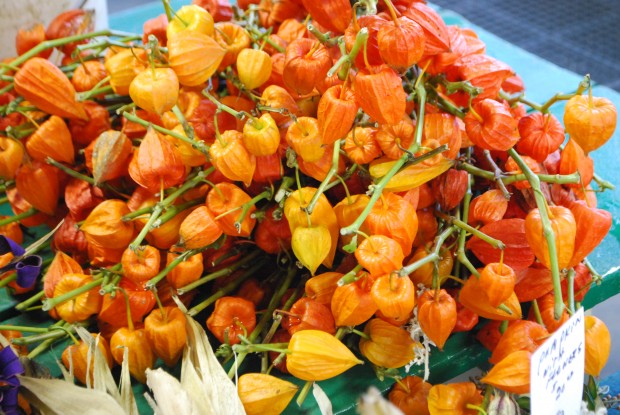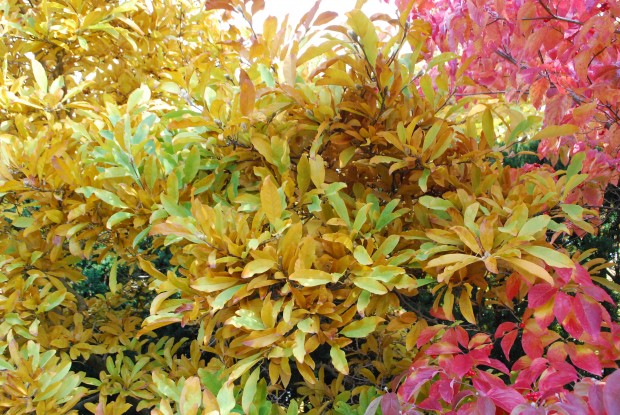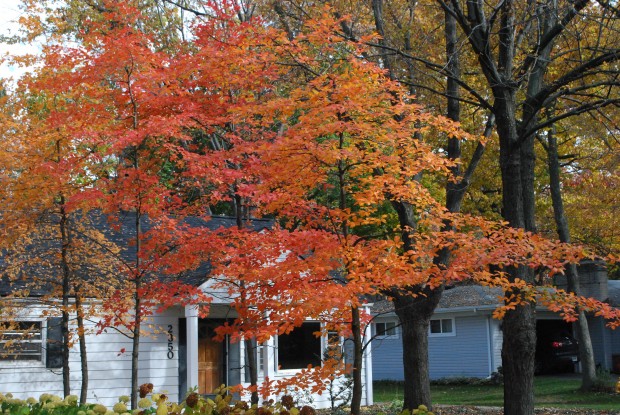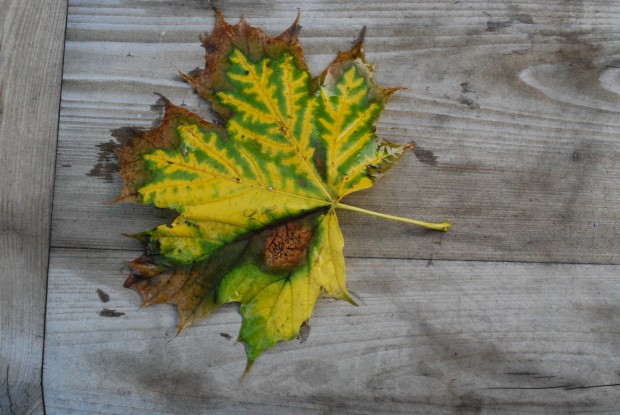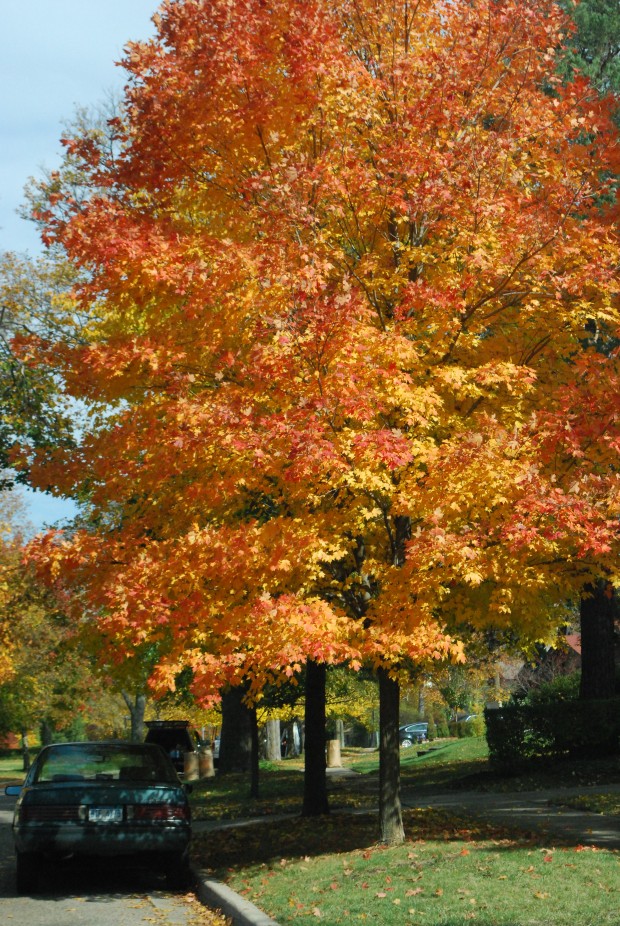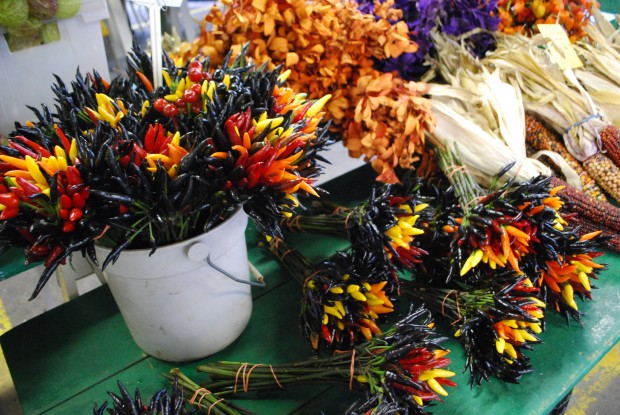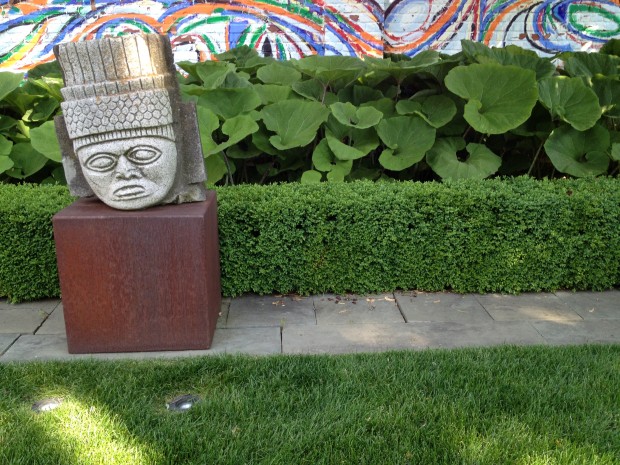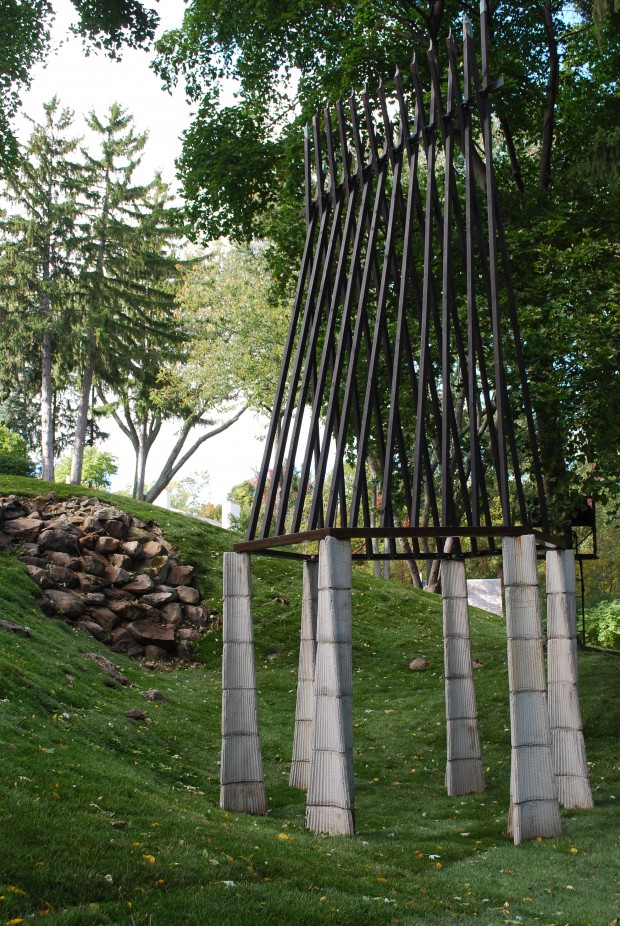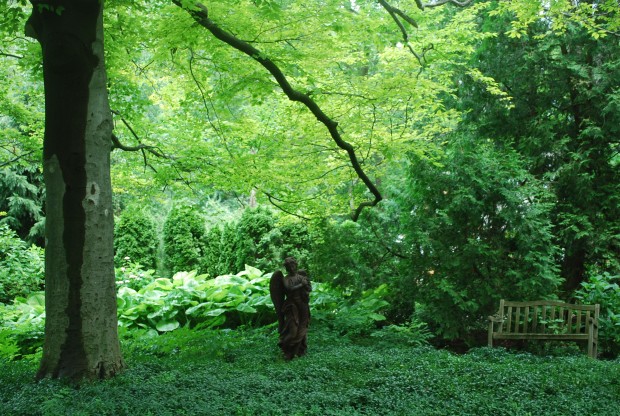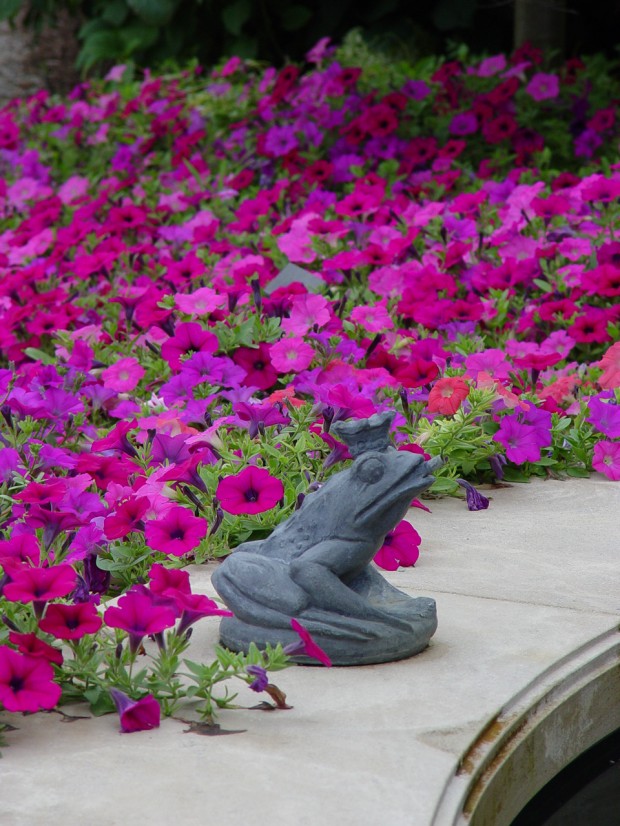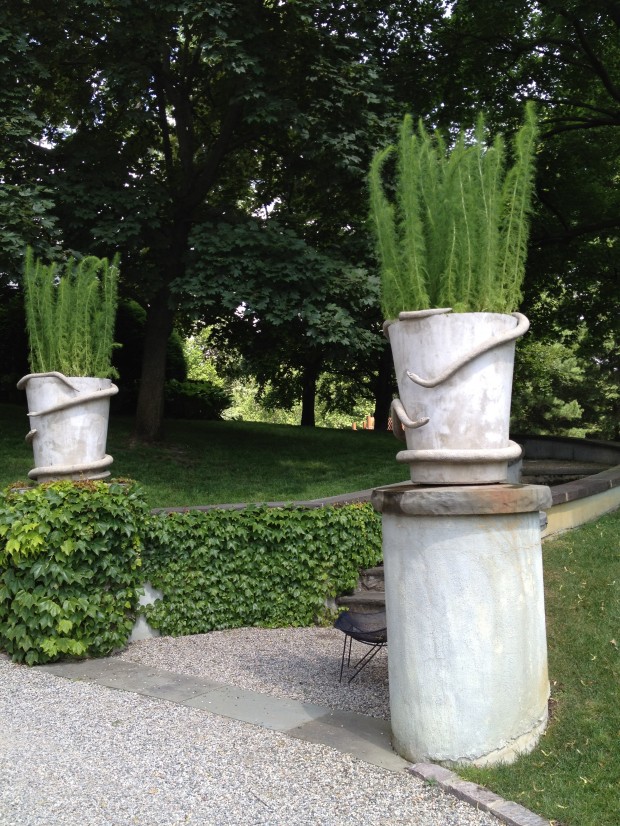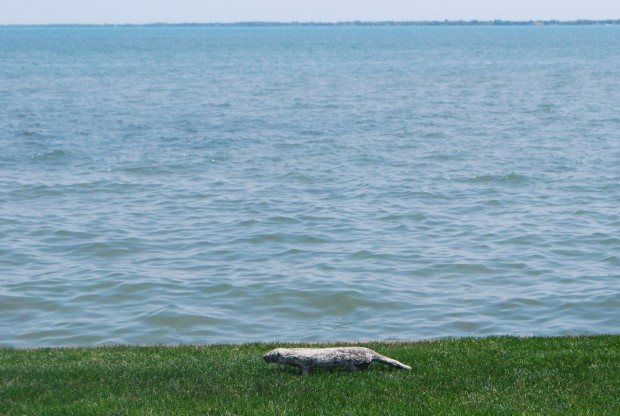There is danger lurking in every garden. It doesn’t take much of a brush with poison ivy to sideline the most passionate gardener. A horde of angry bees can do the same. The leaves of tomatoes and datura are poisonous-never mind the mushrooms that spring up here and there. But given my zone that features a long and often bitter winter, my focus is much more about the dangers that pose a threat to my gardens. The landscape around me, both public and private is on fire now-it is the fall season. A good client tells me that the intensely fiery fall color is nature’s way of apologizing for what is to come.
Leaves are green when the leaf is actively producing chlorophyll. Leaves convert the energy from sunlight into energy that is food fore the plant. This is a vastly oversimplified and maybe not so perfectly accurate account, but it helps to tell the story.
Yellow, orange, red and hot pink pigments exist in leaves, but that color is masked while the plant is in active growth, and producing chlorophyll. Once the days begin to shorten, the plant responds to this slowing down of the growing season by reducing, and finally ending its production of chlorophyll.
Would that gardeners had a mechanism that sophisticated for dealing with the season coming to an end. I am outside cruising the garden now in a coat and hat, shivering, in an effort to stave off the inevitable. I value those cold temperature stalwarts the pansies as much in the fall as the spring. My Rozanne geraniums and my Japanese anemones are in full flower right now. None of their leaves are on fire-they are green as green can be.
Perennials need much less time to prepare for winter than the trees. Giant plants take months to slow down, so onc the ground is frozen, they are but a breath away from a dormant state. Hopefully they have stored plenty of energy which will sustain them throught the winter.
Our fall is associated with the fruits of the harvest. Brilliantly orange pumpkins are available everywhere right now. At market, the red, yellow and orange peppers add lots of visual heat on chilly days. The color Chinese lantern seed pods is a comfort.
Our fall color in a good year is sensationally beautiful. It is hard to believe that all of this warm color comes at a time of year when the overnight temperatures are steadily dropping. This magnolia in full fall color is an expression of yellow that rivals forsythia in the spring.
Nyssa sylvatica is a very architectural tree. Simple and unobtrusive in shape and leaf, the fall color is its glory. The tangerine and yellow orange of these leaves is a standout in a fall landscape.
This leaf from a Princeton Gold maple is singed by cold, and fungus. The process of the slowdown of chloropyll production is obvious. Danger-winter dead ahead.
Sugar maples are noted for their fiery fall color. Someday I would like to take a fall color tour in northern Michigan, or New England. But trees all over my neighborhood do a great job of making the beginning of the end of the garden bearable.
All five of these leaves came from one of my yellow butterflies magnolias. They illustrate the process by which a green leaf matures, and drops. The danger ahead? A winter that threatens the life of even the best prepared of plants. It can happen.
Gardening in a zone with harsh winters has its dangers, for plants and gardeners alike. All of the fiery signs are out there.
For more on Danger Gardens, check out the posts of other members of the Garden Designers Roundtable, and our guest writer this month, the very talented gardener Loree Bohl :
Loree Bohl : Danger Garden : Portland, OR
Pam Penick : Digging : Austin, TX
Rebecca Sweet : Gossip In The Garden : Los Altos, CA
Mary Gallagher Gray : Black Walnut Dispatch : Washington, D.C.
Lesley Hegarty & Robert Webber : Hegarty Webber Partnership : Bristol, UK
David Cristiani : The Desert Edge : Albuquerque, NM
.

